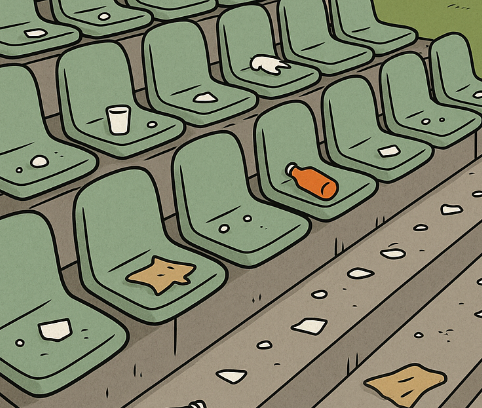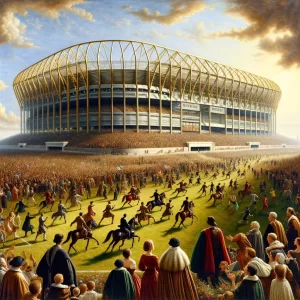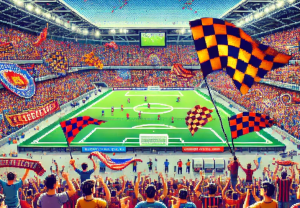
Title: Fix Small Problems, Stop Big Trouble
Picture this: a fan hurls a plastic bottle onto the pitch. Nobody intervenes. Soon, chants turn abusive, tempers flare, and before long, fights break out in the stands.
What started as “just one bad moment” snowballs into chaos.
A new study in Frontiers in Psychology brings fresh insight into why this happens. Using the Broken Windows Theory-Based Spectator Behavior Scale (BWTSBS), researchers investigated how even minor signs of disorder in the stands—such as insults, littering, or disregarded rules—can create ripple effects that fuel larger problems, including violence, aggression, or toxic fan culture.
For coaches, club leaders, and anyone who cares about building a healthy soccer environment, this study is a wake-up call: what you tolerate in the stands matters just as much as what happens on the pitch.
What the Research Found
The researchers surveyed over 200 fans across different sports in Turkey, using the BWTSBS to measure how spectators respond to disorder. They applied rigorous statistical tests (exploratory and confirmatory factor analysis) and found:
- One core driver of fan behavior: The scale confirmed that most “bad” behaviors in the stands stem from a single underlying factor—how people perceive disorder. When small violations go unchecked, fans interpret it as “the rules don’t matter here.”
- Demographics matter: Men, fans who closely follow coaches or managers, and football association members showed higher “spectator behavior” scores, meaning they were more active, positively or negatively.
- Reliability counts: The 13-item scale proved highly reliable (Cronbach’s Alpha = 0.937), meaning it consistently measures spectator behavior patterns.
Bottom line: The environment you create in the stands directly shapes how fans act.
Why This Matters for Soccer Clubs
Soccer isn’t just about tactics and training—it’s also about culture. If the stands feel safe, respectful, and supportive, players thrive. If not, negativity spills onto the pitch and into the community.
Here’s how the research translates to real-world soccer:
1. Small Rules, Big Impact
Just like fixing a broken window stops crime from spreading, addressing “minor” fan misbehavior early prevents escalation. That means:
- Responding to offensive chants right away.
- Enforcing “no-throw” rules for objects on the field.
- Setting clear codes of conduct for parents at youth games.
2. Leaders Set the Tone
The study showed fans who pay attention to managers’ and coaches’ statements were more engaged. That’s a powerful lever for positive influence. When coaches or club leaders speak out against toxic behavior, fans listen.
3. Membership Builds Responsibility
Fans who belonged to official football associations scored higher on spectator behavior. Formal membership appears to foster accountability. For youth clubs, consider parent contracts or supporter groups that promote positive culture.
Actionable Tips for Clubs and Coaches
Here are three takeaways you can apply right away:
- Create a “zero-tolerance” policy for small violations. Post it clearly in stadiums or share it at youth matches. Make sure staff and volunteers are empowered to enforce it.
- Use your voice wisely. Coaches and managers should consistently reinforce positive fan culture, both in press briefings and team newsletters.
- Build structured supporter groups. Encourage fans to join official associations or booster clubs where expectations for behavior are clear.
Your Turn to Kick It Off
This study shows that fixing “small cracks” in fan behavior keeps the whole soccer environment stronger. Now it’s your move:
- How does your club handle minor fan disruptions?
- Have you seen small misbehaviors escalate into bigger problems during a match?
- What role do you think coaches and club leaders should play in shaping fan culture?
Drop your thoughts in the comments or share them on social media—because building better soccer isn’t just about players, it’s about all of us.



